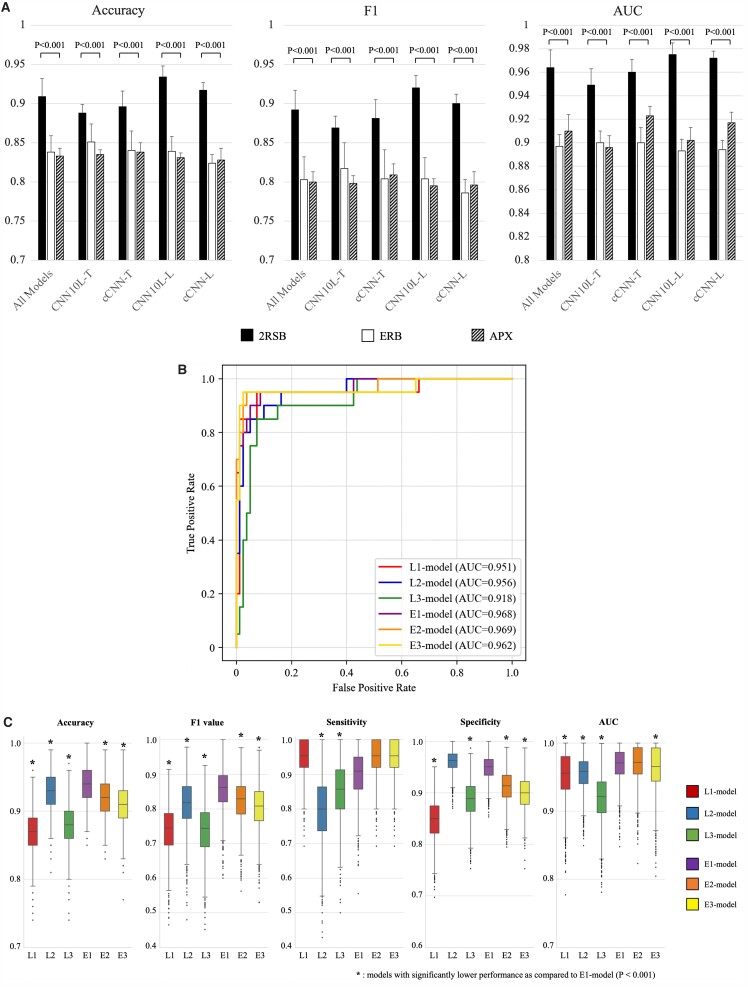Figure 1.
Performances of models in the test dataset. (A) The performance metrics according to the locations of the test dataset (4-s data) are shown. The metrics are significantly better in the second intercostal space along the right sternal border location than in the other auscultation locations. (B) The receiver-operating-characteristic curves of the developed models based on the 15-s test dataset are shown. All models demonstrated the area under the curve over 0.9. (C) Accuracy, F1 value, sensitivity, specificity and area under the curve based on the 15 s test dataset of the selected models (L1, L2, and L3) and the ensemble models (E1, E2, and E3) using bootstrapping are shown. The F1 value and accuracy of E1-model were significantly higher as compared to the other five models (P < 0.001). For all parameters the performance of E1-model was not inferior to the other models.

